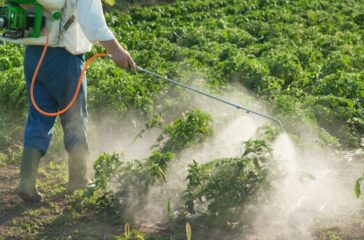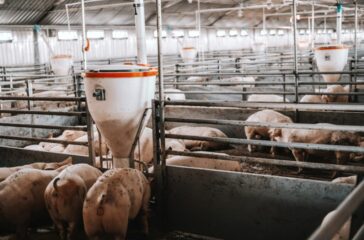By Carey Gillam, Margot Gibbs and Elena DeBre
In 2017, two United Nations experts called for a treaty to strictly regulate dangerous pesticides, which they said were a “global human rights concern”, citing scientific research showing pesticides can cause cancers, Parkinson’s disease, Alzheimer’s, and other health problems.
Publicly, the industry’s lead trade association dubbed the recommendations “unfounded and sensational assertions”. In private, industry advocates have gone further.
Derogatory profiles of the two UN experts, Hilal Elver and Baskut Tuncak, are hosted on an online private “social network” portal for pesticide company employees and a range of influential allies.
Members of the network can access a wide range of personal information about hundreds of individuals from around the world deemed a threat to industry interests, including US food writers Michael Pollan and Mark Bittman, the Indian environmentalist Vandana Shiva and the Nigerian activist Nnimmo Bassey. Many profiles include personal details such as the names of family members, phone numbers, home addresses and even house values.
The profiling is part of a broad campaign – that was financed partly with US taxpayers dollars – to downplay pesticide dangers, discredit opponents, and undermine international policymaking harmful to the pesticide industry, according to court records, emails and other documents obtained by the non-profit newsroom Lighthouse Reports in an investigative reporting collaboration with The New Lede, the Guardian, and other international media partners.
The efforts were spearheaded by a “reputation management” firm in Missouri called v-Fluence. The company, founded by former Monsanto executive Jay Byrne, provides self-described services that include “intelligence gathering”, “proprietary data mining” and “risk communications”.
The revelations demonstrate how industry advocates established a “private social network” to counter resistance to pesticides and genetically modified (GM) crops in Africa, Europe and other parts of the world, while also denigrating organic and other alternative farming methods. More than 30 current government officials are on the membership list of the private network, most of whom are from the US Department of Agriculture (USDA).
Elver, who is now a university research professor and a member of a United Nations food security committee, said public money would have been better spent on scientific research into the health impacts of pesticides than on profiling people such as herself.
“Instead of understanding the scientific reality, they try and shoot the messenger. It is really hard to believe,” she said.
Author Michael Pollan’s profile portrays him as an “ardent opponent” of industrial agriculture and (GM) crops and a proponent of organic farming. His profile includes a long list of criticisms and details such as the names of his siblings, parents, son and brother-in-law.
“It’s one thing to have an industry come after you after publishing a critical article. This happens all the time in journalism,” Pollan said. “But to have your own government pay for it is outrageous. These are my tax dollars at work.”
 EWG
EWG








